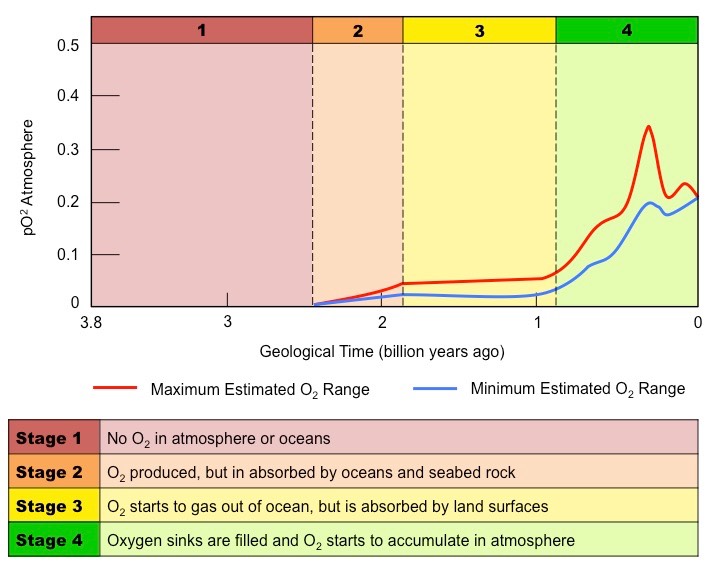![]()
Application:
• Changes to the Earth’s atmosphere, oceans and rock deposition due to photosynthesis
Only one significant source of oxygen gas exists in the known universe – biological photosynthesis
- Before the evolution of photosynthetic organisms, any free oxygen produced was chemically captured and stored
Approximately 2.3 billion years ago, photosynthetic organisms began to saturate the environment with oxygen
- This led to changes in the Earth’s atmosphere, oceans, rock deposition and biological life
Oceans
- Earth’s oceans initially had high levels of dissolved iron (released from the crust by underwater volcanic vents)
- When iron reacts with oxygen gas it undergoes a chemical reaction to form an insoluble precipitate (iron oxide)
- When the iron in the ocean was completely consumed, oxygen gas started accumulating in the atmosphere
Atmosphere
- For the first 2 billion years after the Earth was formed, its atmosphere was anoxic (oxygen-free)
- The current concentration of oxygen gas within the atmosphere is approximately 20%
Rock Deposition
- The reaction between dissolved iron and oxygen gas created oceanic deposits called banded iron formations (BIFs)
- These deposits are not commonly found in oceanic sedimentary rock younger than 1.8 billion years old
- This likely reflects the time when oxygen levels caused the near complete consumption of dissolved iron levels
- As BIF deposition slowed in oceans, iron rich layers started to form on land due to the rise in atmospheric O2 levels
Biological Life
- Free oxygen is toxic to obligate anaerobes and an increase in O2 levels may have wiped out many of these species
- Conversely, rising O2 levels was a critical determinant to the evolution of aerobically respiring organisms
Changes to Oxygen Levels on Earth

Link: The Rise of Atmospheric Oxygen
